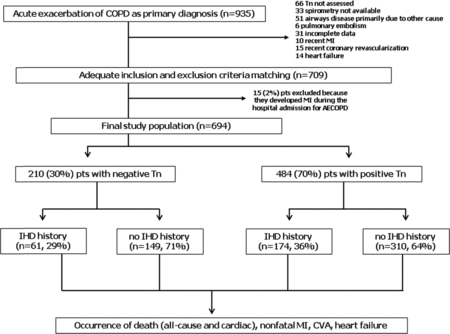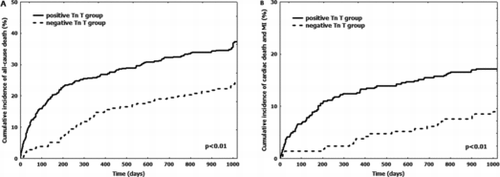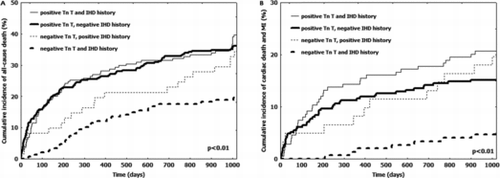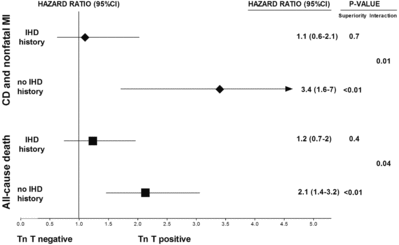Figures & data
Figure 1. Study flow-chart. COPD: chronic obstructive pulmonary disease. Tn: troponin. MI: myocardial infarction. AECOPD: acute exacerbation of COPD. IHD: ischemic heart disease. CVA: cerebrovascular accident.

Table 1. Principal characteristics of study population stratified according to troponin status
Figure 2. Cumulative incidence of adverse events stratified according to Tn T elevation. Solid line: positive Tn T. Dotted line: negative Tn T. A: cumulative incidence of all-cause death. Tn: troponin. B: cumulative incidence of cardiac death and nonfatal MI. Tn: troponin. MI: myocardial infarction.

Table 2. Adverse events of study population stratified according troponin status
Figure 3. Cumulative incidence of adverse events stratified according to Tn T elevation and IHD history. Solid line: positive Tn T. Dotted line: negative Tn T. Thinner lines: patients with positive IHD history. Larger lines: patients with negative IHD history. A: cumulative incidence of all-cause death. Tn: troponin. IHD: ischemic heart disease. B: cumulative incidence of cardiac death and nonfatal MI. Tn: troponin. IHD: ischemic heart disease. MI: myocardial infarction.

Figure 4. Hazard risk of adverse events according to IHD history and troponin status. Subgroup analysis is shown with hazard ratios and 95% confidence intervals (CI) for adverse events (composite endpoint including cardiac death and nonfatal MI; all-cause death) among subgroups of patients (with IHD history vs. without IHD history) according troponin status (negative vs. positive). The probability value for interaction represents the likelihood of interaction between the variables. IHD: ischemic heart disease.

